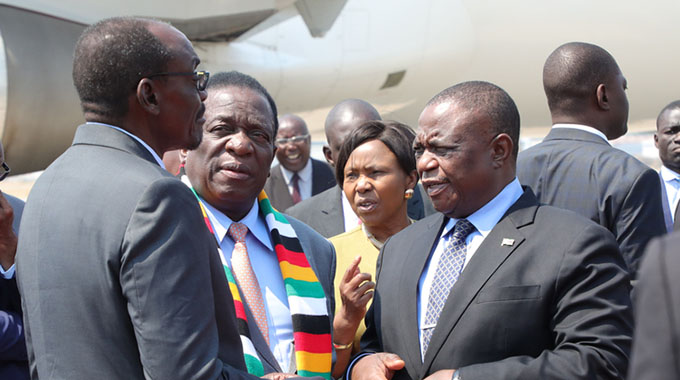Command Livestock unlocks immediate returns

Elita chikwati Senior Agriculture Reporter
Government’s Command Livestock projects have performed beyond expectations, with farmers already realising profits from the enterprises.
Poultry farmers, who benefited from the Command poultry project, have already sold their birds and realised profits.
Those in the Matabeleland region were given heifers.
As at August 28, 844 heifers had been distributed in Matabeleland North Province, while 1 384 heifers were distributed in Matabeleland South Province.
Updating stakeholders on the project recently, Deputy Chief Secretary in the Office of the President and Cabinet and chairman of the Integrated Command Agriculture Taskforce, Mr Justin Mupamhanga said the Command Livestock Programme received a facility from Sakunda valued at $10 million for the purchase of heifers for Matabeleland South and North provinces.
“Sakunda has undertaken to fund the importation of heifers from neighbouring countries subject to the availability of nostro funds. The importation of heifers from neighbouring countries is meant to augment the national herd.
Homelink, a subsidiary of the Reserve Bank of Zimbabwe (RBZ), has offered a $6 million cattle facility to support the remaining six rural provinces,” he said.
Mr Mupamhanga said the broiler project was supported by Sakunda to the tune of two million chicks per month.
“The programme has generated a lot of excitement and demand is very high. The main source of the chicks is Irvines which has also supported the development of 10 model fowl runs one in each of the country’s 10 provinces. The company also donated 250 000 chicks as a start-up investment to launch the 10 model fowl runs,” he said.
He said by August 28, a cumulative 469 000 chicks had been distributed to 176 farmers from Mazowe, Seke, Harare, Goromonzi, Zvimba, Chegutu, Shamva, Marondera, Bindura and Murehwa districts.
“Command poultry started off well. We have 176 farmers on the programme and 90 percent of distributed birds have already been slaughtered and sold. Profits have ranged from $0, 77 cents to $1, 20 per bird, which is quite good and our farmers are happy. We are hoping to get more farmers on the programme across the nation to see more growth,” he said.
In the August Command Agriculture update, Lands, Agriculture, Water, Climate and Rural Resettlement Minister Perrance Shiri said by August 22 a total of $4, 2 million was utilised from the $10 million that was availed by Sakunda beef facility to buy 844 heifers that were distributed in Matabeleland North and 1 384 heifers that were distributed In Matabeleland South including those distributed at the Zimbabwe International Trade Fair.
“The Taskforce is working on modalities to insure the herd under the programme as well as expedite the usage of the remaining $5, 8 million. This will entail the introduction of the buying card system similar to the old CSC system to beneficiary farmers as an alternative to Taskforce members sourcing the heifers.
“The buying card system eliminates the speculative behaviour that exists in the market as the price negotiations will be between the beneficiary farmer and seller. This system also does away with the handling costs of animals as they are transported to the buyer’s farm immediately after payment,” he said.
“So far, a total of 360 000 mature birds were delivered to Kudu Creek and Slaughter Land Abattoirs for slaughter and marketing. Payments for delivered birds were progressing well. This proves that the Command Agriculture programme is a result oriented programme which has improved the livelihoods and food security of farmers,” he said.
One of the Command Livestock beneficiaries, Mr Tendai Munengwa said he started with 30 000 chickens and from his profits he could pay his workers and invest in other projects.
“The business is lucrative and viable. After selling my birds I managed to pay back the loan and paid my 15 workers and it as all smiles to the bank,” he said.
Agriculture economist Mr Prince Kuipa said profit depended on several factors that included the producer price, animal or crop husbandry practices and the type of seed or animal breeds.
He said profits could not be uniform but differed from farm to farm depending with these factors.
“In maize production, the profit depends on the producer price. Our producer price of $390 per tonne is subsidised and the highest in the region if not in the world. It is a good price but also other factors as good crop husbandry practices and post-harvest losses also come into play.
“A farmer should also pay attention to weed control , pests and disease control to get meaningful yields. Farmers should also keep records for them to be able to tell whether they will be making profits,” he said.
He said most farmers under Command Agriculture and those who were following the correct agronomic practises were making huge profits from the programme.
Command Livestock programme was introduced following the huge success of the Special Maize Programme for Import Substitution (Command Agriculture).







Comments